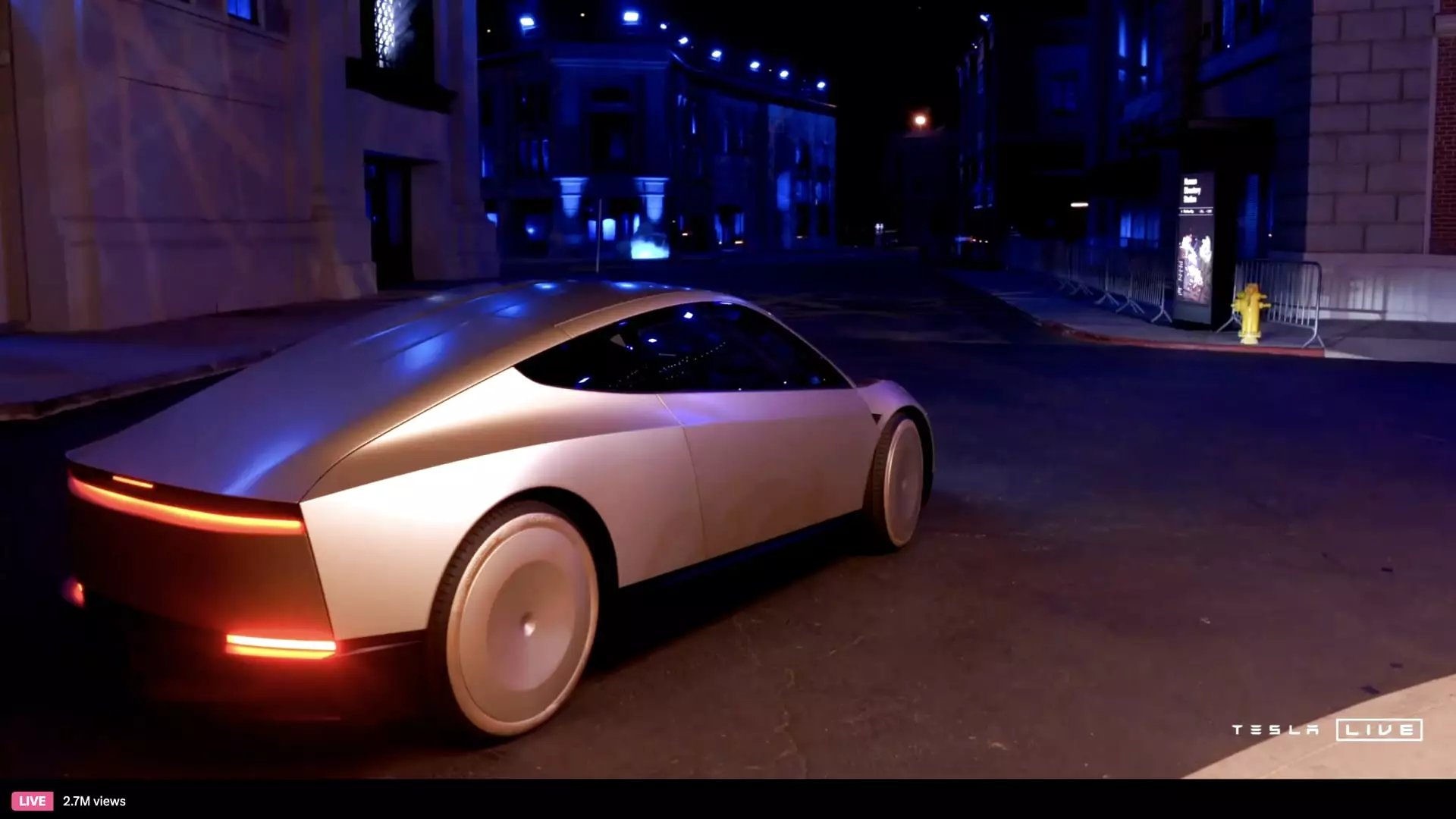The recent unveiling of Tesla’s long-anticipated robotaxi concept, the Cybercab, has sent shockwaves through the investment community as the company’s stock faces a notable decline. This event, led by CEO Elon Musk, was anticipated to showcase groundbreaking advancements in Tesla’s self-driving technology but has ultimately fallen short, leaving many investors and analysts disappointed. This article delves into the implications of the event, investor reactions, and the broader landscape of autonomous vehicle development.
Elon Musk presented the Cybercab as a futuristic, two-seater vehicle devoid of any steering wheels or pedals, ostensibly designed for complete autonomy. While this innovation captures the imagination, the lack of specific details regarding production timelines and manufacturing locations raises significant questions. Musk hinted at a production target before 2027 at a price point under $30,000, but without clarity on where or how these vehicles will be made, the vision appears more aspirational than actionable.
The allure of a low-cost, fully autonomous vehicle is certainly enticing, but investor confidence hinges on more than merely bold claims. The absence of tangible plans and metrics for the rollout of the Cybercab left many experts scratching their heads. For investors, the potential success of Tesla hinges on the execution of such ambitious projects, and without substantial updates, enthusiasm wavers.
Musk’s promises regarding the Full Self-Driving (FSD) capabilities also came under scrutiny. He announced expectations for “unsupervised FSD” operations in regions like Texas and California by next year, but investors and analysts were quick to note the lack of substantial progress updates on the existing FSD technology. Such technology still requires human oversight, undermining claims of full autonomy. The disappointment was palpable, particularly in light of analysts’ observations that the event was bereft of significant information about improvements to FSD.
Investment firms like Barclays and Morgan Stanley both voiced concerns that the event did not adequately illuminate near-term progress or concrete advancements. Barclays specifically noted that the focus seemed skewed toward a long-term vision of AI and autonomous vehicles rather than immediate, actionable insights. Investors are typically drawn to companies that not only articulate ambitious goals but can also demonstrate tangible near-term opportunities to support stock performance.
Following the event, Tesla’s stock plummeted approximately 5.8% in premarket trading. Such a decline underscores the disconnect between Musk’s visionary aspirations and the expectations of investors who seek clarity and substance. Analysts from Piper Sandler echoed this sentiment, predicting a possible sell-off as trading-oriented firms react to the underwhelming presentation of the Cybercab.
Morgan Stanley specifically pointed out that Musk’s presentation failed to position Tesla as a leading player in the AI domain, lacking in-depth discussions about potential collaborations with Musk’s own AI firm, xAI. The absence of solid data, especially regarding FSD technology and ride-share economic viability, has led many to question the roadmap Tesla has in place moving forward.
While Tesla remains a titan in the electric vehicle market, the broader landscape of autonomous vehicle development presents various challenges. Companies like Waymo have made strides in offering self-driving services that are operational and available to the public. Tesla, with its ambitious vision, risks falling behind if it cannot translate its innovative potential into market-ready solutions.
Moreover, the regulatory landscape poses additional hurdles for the advancement of self-driving technologies. Skepticism surrounding safety protocols and the readiness of autonomous vehicles for public roads continues to be an area of concern. For Tesla to regain investor confidence, it must not only unveil groundbreaking technologies but also demonstrate a clear, measured approach to overcoming these regulatory challenges.
Tesla’s recent robotaxi event epitomizes the precarious balance between ambitious innovation and investor expectations. While Elon Musk’s vision for a future filled with autonomous vehicles is compelling, the lack of immediate, actionable information leaves investors with more questions than answers. Moving forward, clarity, actual progress on FSD capabilities, and robust strategies for manufacturing and deployment will be essential for Tesla to reassure its stakeholders and reclaim the momentum lost during this disappointing reveal. The journey to mainstream autonomy is fraught with challenges, and how Tesla navigates this landscape in the months to come will determine its position not just as a leader in the electric vehicle sector, but as a true pioneer in the realm of self-driving technology.

